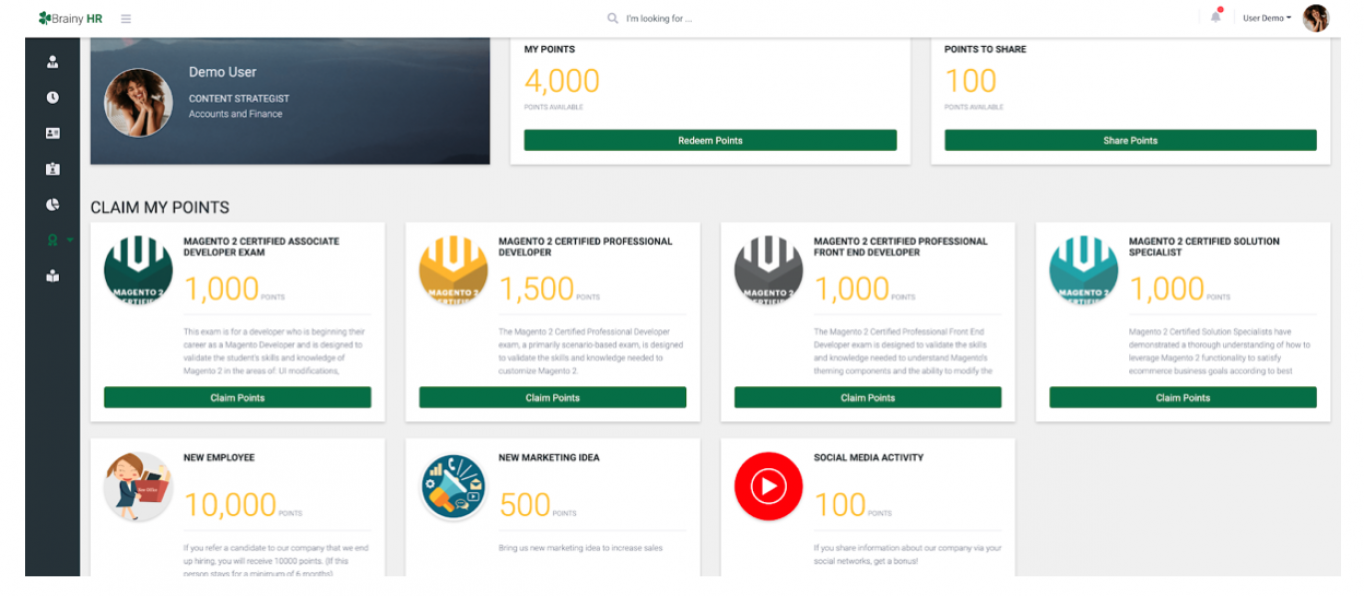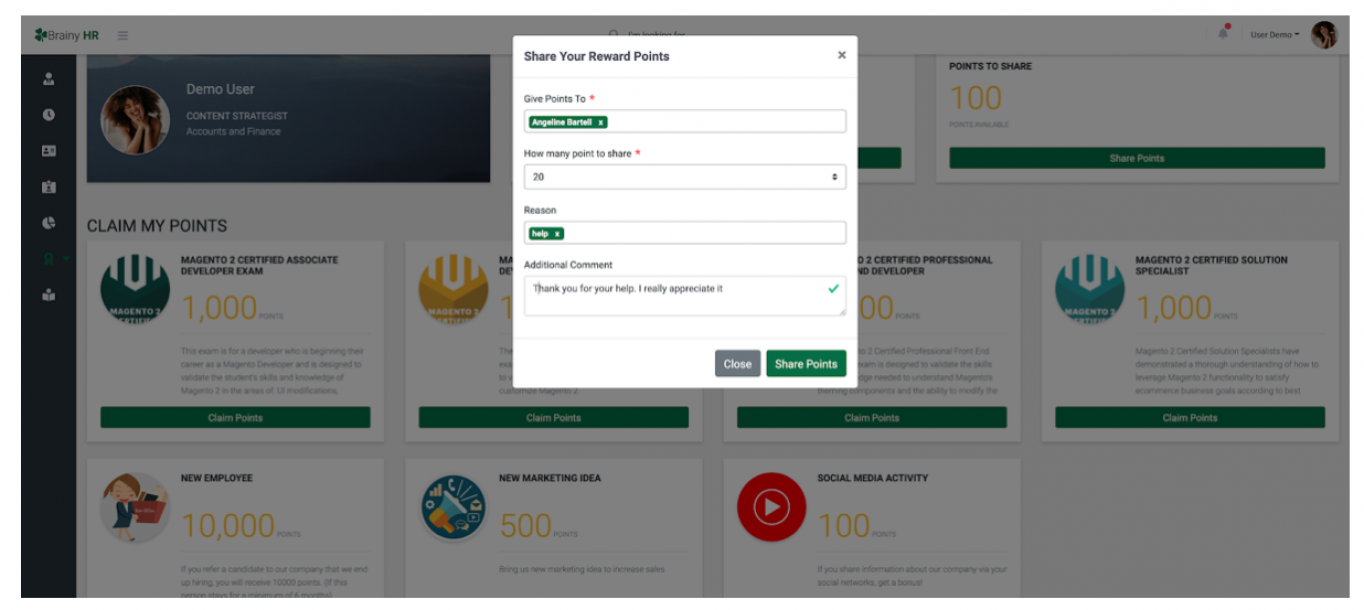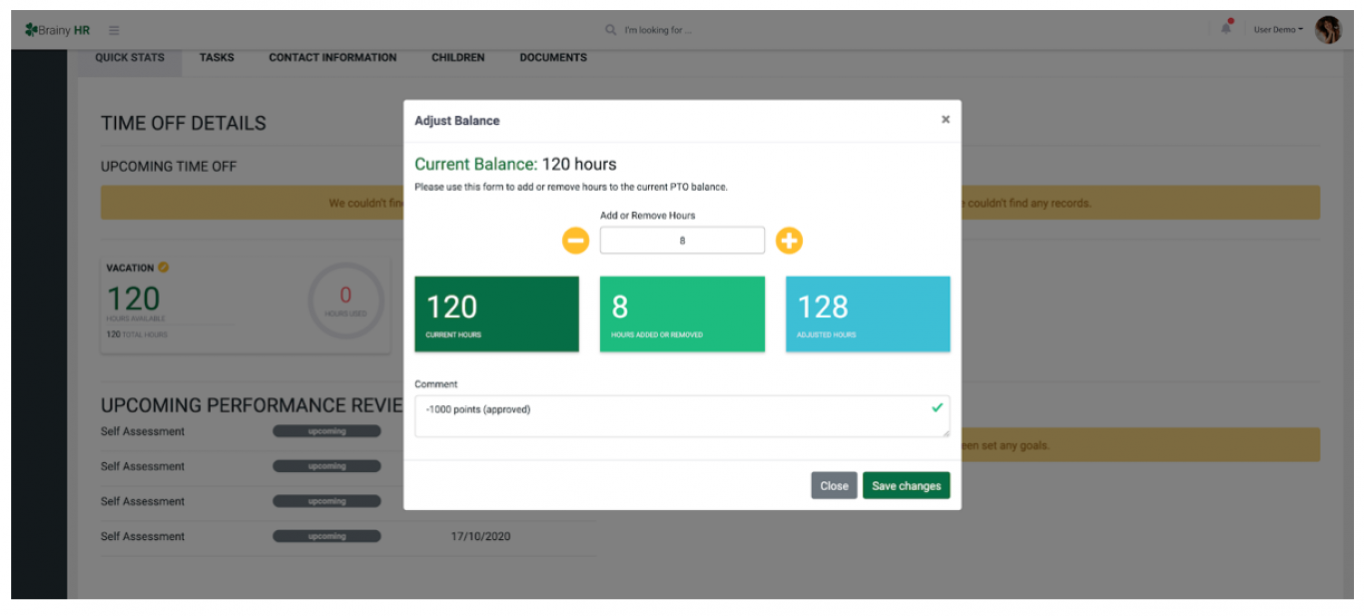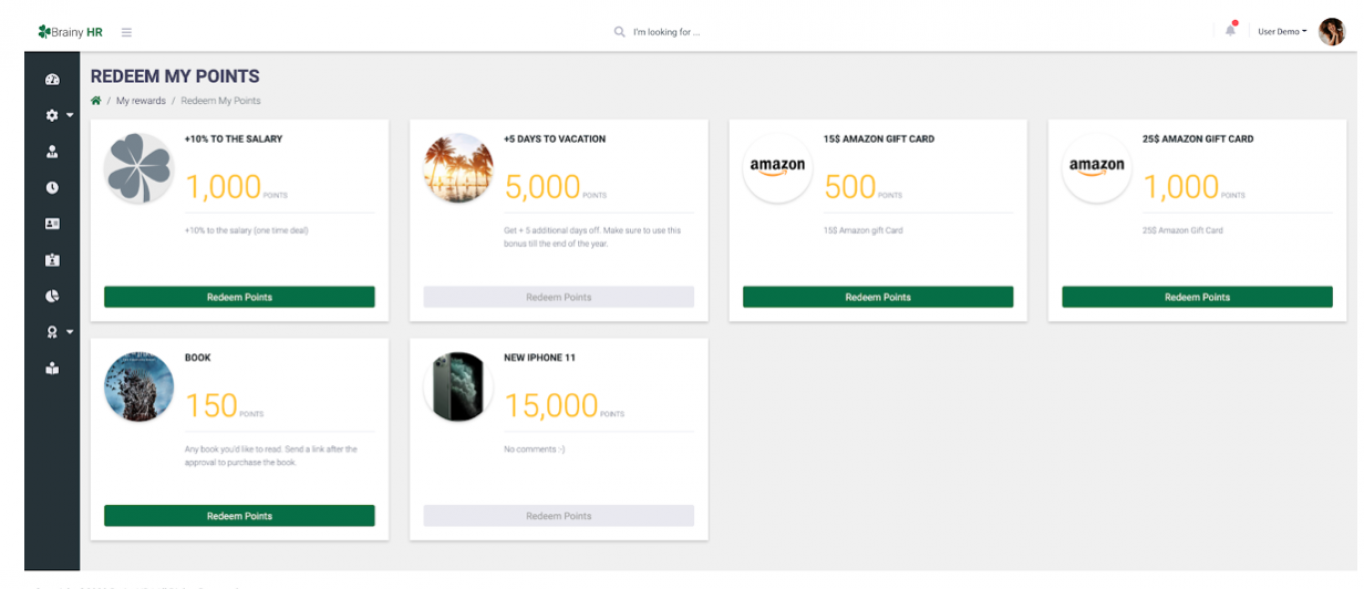In today's ultra-competitive work environment, companies advantage is those with the best-trained and well-qualified employees. However, even the best employees cannot work well when they are not motivated enough. Therefore, the recognition of employees in the workplace must be an inherent part of every company's culture.
Are you looking to create a productive high-level employee reward and recognition? Rewarding staff with the right rewards and benefits increases retention and engagement, which can deliver amazing results for your company's culture.
We've researched dozens of reward and recognition programs; now, you don't have to. We rely on HR experts' advice to understand hidden pitfalls, the keys to successful reward programs, how to calculate ROI, and more.
Why implement a rewards and recognition program? It’s not easy? We hope this guide will save you a lot of research time and help you choose the right solution for employee recognition in your company!
Employee recognition and reward programs help companies strengthen their mission, values, and culture. Recognizing and rewarding employees helps motivate them to continue to make a valuable contribution to the company's goals. Employee recognition software provides companies, staff, and managers with a variety of employee reward methods. These recognition solutions can help companies offer rewards such as social recognition, gift cards, free lunch or tours, and more to their employees.
Before choosing an employee recognition solution, find out what makes your employees feel most valuable and what your company wants to use as motivation. Find a tool that can offer this method to employees. Recognition can feel like a reward, but in the end, it is not the same.
Employee recognition is a more playful approach, which can assign points or badges to employees or allow them to speak or publish information about each other's contributions. The recognition program itself does not provide tangible rewards and is often part of an overall employee engagement platform. Ensure the solution you choose can offer your employees what you want to give: tangible rewards or verbal recognition and feedback.
What Is a Rewards and Recognition Program
Appreciation is the recognition of the company's employees for exemplary performance. Basically, recognizing employees in the workplace is to enhance certain behaviors, practices, or activities that result in better performance and positive business outcomes.
One of the biggest reasons to reward employees and motivators for employees may be high feedback from colleagues. The best way to get this respect is to recognize that he is good at what they do.
While most would get rewards and recognition for cash bonuses or extravagant events, employee recognition doesn't have to be that expensive or glamorous. Employee awards can be such sincere and original compliments. These can be as simple as a thank you email or a friendly greeting at work.
Key factors why your business needs rewards and recognition program:
- Improving corporate culture through a reward system;
- Possibility of recognition between employees themselves;
- Rewarding employees with cash, gift cards, and excursions;
- Motivation of the team to constantly work at the highest level;
- Incentivizing employees outside the office with health rewards.
Recognition thus represents the preliminary stage of praise. Use the opportunity to receive recognition for employees who you appreciate but who do not perform well. Many employees do a good job without being particularly outstanding. Nevertheless, they are important for the company as they handle a large part of the daily routine work. With recognition, you acknowledge “normal operation” and “normal performance” or refer to merely performing activities that offer little room for praise.
As opposed to praise, express appreciation not only sporadically but regularly. Despite frequent use, recognition does not lose its effect.
Top 5 Benefits of Having a Rewards and Recognition Program
The best employee reward programs benefit both the employees and the teams that use them. These benefits are good for companies looking to launch a new employee reward and recognition program and employers looking to move to one of the best suppliers.
Here are the main benefits of having a rewards and recognition program of employee reward and recognition:
1. Increasing employee engagement
When you partner with the right reward program provider, your employees will engage in regular, positive interactions that reinforce company value. This translates into better results, more employees involved, and generally a better workspace.
2. Increasing the period of retention of employees
One of the other key benefits to rewards and recognition program of increased engagement is higher employee retention. The cost of replacing employees is extremely high, and therefore, whatever HR can do to increase retention has a huge impact on the business.
3. Personalization of rewards
You are most likely spending money every year on company benefits. Maybe it's delicious coffee, snacks in the office, or a comfortable lounge. But it's hard to make everyone happy. Some people don't drink coffee. Some have children and cannot participate in many corporate events. The employee reward and employee recognition program allows you to reallocate the budget portion that makes some people happy and allows individuals to choose the importance of employee rewards and recognition programs.
4. Automation of rewards
Using one of the best employee reward platforms means HR has to do a lot of work to drive usage of the platform. Basically, it all starts with employees getting recognized for work anniversaries, birthdays, or employees of the month. In the best-case, the tool you choose creates an effective cycle of earning employee rewards one by one.
5. Saving time
If your HR team has spent cycles planning when and how to recognize and reward employees, then you're in luck. All programs in this segment have created guidelines on how your employee compensation program should work. Some even have dedicated consultants who will work with you to customize the program at your company.
BrainyHR’s Rewards and Recognition Program
Employee engagement and automatization were an important HR trend in 2020. HR employees believe HR technologies will improve employee attitudes towards the company, and a majority of employees surveyed believe that engagement is important to a thriving corporate culture. Employee recognition is an important piece of the employee engagement puzzle, which is essential for a business to thrive. BrainyHR is software, which covers an employee reward system for business and HR managers.
BrainyHR solution helps you with the employee recognition and rewards program:
wide range of HR oversight tasks, including employee recognition, employee engagement, and compensation management.
Helps companies, executives, and staff maintain their organization's pulse by tracking employee feedback and interactions through puls surveys.
Software helps organizations implement, manage and administer wellness programs. These tools help companies shift work cultures towards health and wellness, which can further increase employee engagement.
You can create different types of awards. Make them personal. Allow your employee to choose gifts based on their preferences. It can be a book, course, money, gift card, additional time off. HR or company owners can plan a recognition and rewards guide for the year:
Step 1. Allocate a budget for company rewards and types.
Step 2. Combine rewards with the performance review process, with each employee's goals and the company's goals.

Step 3. Find out the best reward for employees (do a survey or ask your company managers or team leads).

Step 4. Develop a list of actions for which employees can receive bonuses or forward to your teammates.

Step 5. Develop a list of rewards for which employees can exchange these bonuses (depending on the information collected from employees - what exactly they are interested in and need)

Step 6. Emphasize that the reward can be both tangible and intangible, and there are all possibilities. For example, if an employee wants an additional day off, then after the manager makes this request, you can immediately charge the employee (specific) these hours.

Step 7. The system is transparent, and employees and managers see performance; employees are more satisfied with the important tasks because the reward motivates.
Types of Employee Reward Programs
There are several different rewards and recognition program ideas for both individuals and teams.
Variable pay
Variable or performance-based pay is a compensation program where a portion of a person's salary remains "questionable." Variable salaries can be tied to company performance, group results, personal achievement, or a combination of both. It can take many forms, including rewards programs, promotions, and one-time awards for special achievements. Some companies pay their employees lower salaries than competitors but offer various compensation programs in return. But if your requirements are too high, then these programs will be ignored.
Prizes / bonuses
Bonus programs have been used in American businesses for some time. They tend to reward individual achievements and are often used in sales organizations to reward agents for improving their performance. Bonuses can also be used to reward the achievements of the entire group. In fact, many businesses today have moved from individual bonus programs to those that reward contributions to corporate productivity at the group, department, or entire organization level.
According to some experts, small businesses interested in employee recognition's long-term benefits should consider another reward type. Bonuses / bonuses are short-term motivations. The employee receives remuneration for the previous year, not for promising achievements. Besides, these programs must be carefully structured to ensure that they reward those achievements of an individual or group outside the scope of their core functions. Otherwise, they may be perceived as a regular salary bonus rather than a reward for outstanding work. However, proponents argue that bonuses are a legitimate reward for outstanding performance, and they argue that such compensation can actually be a powerful tool to support future top-tier efforts.
Profit-sharing
Profit-sharing can be called a system in which a share of the net profit received over a certain period is distributed among its employees. This type of reward can be in the form of real money or through contributions to 401 (k) employee plans. The benefit to an organization that offers this type of remuneration is keeping fixed costs low.
Profit-sharing is the reward of employees for their contribution to the achievement of the company's goals. This allows employees to stay in place because they have to work in the organization for several years before receiving any money. On the other hand, profit sharing cannot properly motivate people if everyone gets their share anyway. But this can be counteracted by team spirit (everyone is teaming up for this profit), especially if it comes from employees and not just from management propaganda.
Stock option
Today, stock options are becoming an increasingly popular method of rewarding line managers and other employees. This gives them the right to buy a certain number of shares at a fixed price over a certain period of time (usually about ten years).
Like profit-sharing plans, a stock option acts as a long-term motivator. If an employee has worked in the company for a certain period (usually about 4 years), he becomes a participant in this program. If a person leaves the company before obtaining the right to purchase shares, then he automatically loses this opportunity. After purchasing the shares, the employee can either keep them or sell them on the market.
Additional shares are a risk, both for the company and for any employee. If the option's strike price is higher than the stock market price, the worker option is worthless. When employees use the option, the company must issue a new block of shares to be quoted on the exchange. The market capitalization of a company grows because of its market value, not the strike price at which the employee buys it. When a lot of the company's shares are outstanding, its earnings can be reduced. To avoid this, the organization's profits must grow at the same rate as the number of shares outstanding. Otherwise, the company must buy back the shares on the open market to reduce outstanding shares.
Most Common Types of Employee Recognition Program
Here are some examples of employee rewards that we think are interesting and will significantly impact your program for those looking for inspiration. Here are some examples of the benefits of employee rewards and recognitions:
Social events
One of the best ways to show appreciation to employees is to share the love with your coworkers by purchasing snacks for the office, organizing a bowling trip, or throwing a pizza party.
Providing rewards
Some of the more popular reward options are transferring your points/money to another employee. Make sure your coworkers can take what they earn and send it to a decent employee.
Non-monetary
The best reward for employees can be fun activities that don't cost money - lunch with the CEO, the opportunity to talk to the rest of the organization, etc.
Travel
Travel can be a little more expensive. However, we always hear when one of our friends goes on a paid trip after reaching a promotion, 10th anniversary, or other big events.
Recognition
Being recognized is a key part of any employee reward program and can also be the reward itself. Giving co-workers praise and getting it at company meetings or on social media is a great way for employees to feel successful in their work.
City quests
What Makes Your City Great? Your sports teams? Specific restaurants or activities? These are all amazing examples and ideas for employee rewards.
Sports activities
Many people love to exercise but either do not have the time or find it difficult to justify spending money. Present your worthy employees with healthy exercises - swimming, yoga, or even high-end sports equipment.
Training
The job market is constantly changing, and most skills have a shelf life of less than a few years. People should continue to learn and be grateful for being reimbursed for attending an online course or attending a conference. Plus, you now have an even more capable member of your team!
Rest
Work can be stressful. Life can be stressful. Give a gift for relaxation. This can take the form of a massage, a day off, a night out at a local favorite restaurant, or something else that gives people time to slow down and regroup.
Other
So, there is great value in offering employee benefits and rewards. But there is also value in offering variety. Look for ways to let your employees choose their own gifts from several hundred options instead of a narrow set of rewards.
6 Ways on How to Create a Reward and Recognition Program
Implementing employee rewards and recognition programs isn't the only thing going on in your job. It is easy to stumble across various pitfalls when buying and running one of these programs. Here are the best ways from BrainyHR.
More than money
Something we found a little counterintuitive is that these programs aren't just about money. In fact, there is very little correlation between the money offered to employees and the impact of the program on retention and engagement.
Time-saving
HR is busy. Simply and easily. Most days include some firefighting work. Plus, as a cost center, HR tends to be understaffed and overworked. What we noticed is that even an employee incentive program that starts well can die over time. It is important to provide a timely monthly/quarterly build to ensure your program is functional (add a calendar prompt to reserve one hour per month). It's also a good idea to build automation into your reward program - like people getting rewarded on birthdays, anniversaries, etc. This means things will work even if you're too busy to sign up.
Manager Involvement
We've seen cases where managers get $ 1,000 or more a month to give to their employees, but they are too busy to do so. Most people need a little nudge. On your supplier's dashboard, you can see who needs it. But the most important piece of advice here is to outline why this program is so important initially. Show some research on how this will affect performance, retention, and engagement. Getting managers to understand how this will enable them to achieve their goals is key.
Integration with HR systems
If your vendor doesn't integrate with your solution, you will be very disappointed. When your rewards platform doesn't interact with mainstream HR programs seamlessly (.csv doesn't count!), That means you'll constantly be updating it with manual work.
Check for hidden fees.
Some vendors offer free software. However, you can pay for this through a mark-up on the products your employees receive. For example, your employee receives $ 20 rewards and receives a coffee mug that sells for $ 5.99. If the vendor model seems too good to be true, make sure there are no hidden costs.
Budgeting
"Best practice" is to allocate 1-3% of a person's salary per year for non-cash rewards. A portion of that budget will be spent on things like outings and activities, wellness programs, etc. The $ 100 / employee/quarter in rewards is what we consider to be best practices for reward and recognition programs.
Conclusion
The organization should foster a work culture that encourages creativity and diversity and has effective anti-discrimination policies that promote flexible working where possible. Making your employees appreciate and proud of their work will not only work wonders for your employer branding strategy, but it will also improve employee turnover.
Of course, the general incentive system for all employees of the organization seems to be ineffective. Today the labor market has a shortage of qualified specialists. And for the successful development of the company, a stable, effective team is required. Brainy HR tool will help the manager find out each employee's goals, solve staff turnover, and use the recognition and rewards program; you can start a 30-days free trial today. No credit card is required. No obligation. No risk. This will also save valuable time and money for the search and adaptation of new specialists and will also help to form a strong, reliable team of professionals and like-minded people.


 Posted on Jan 12, 2021 by Anna
Posted on Jan 12, 2021 by Anna


